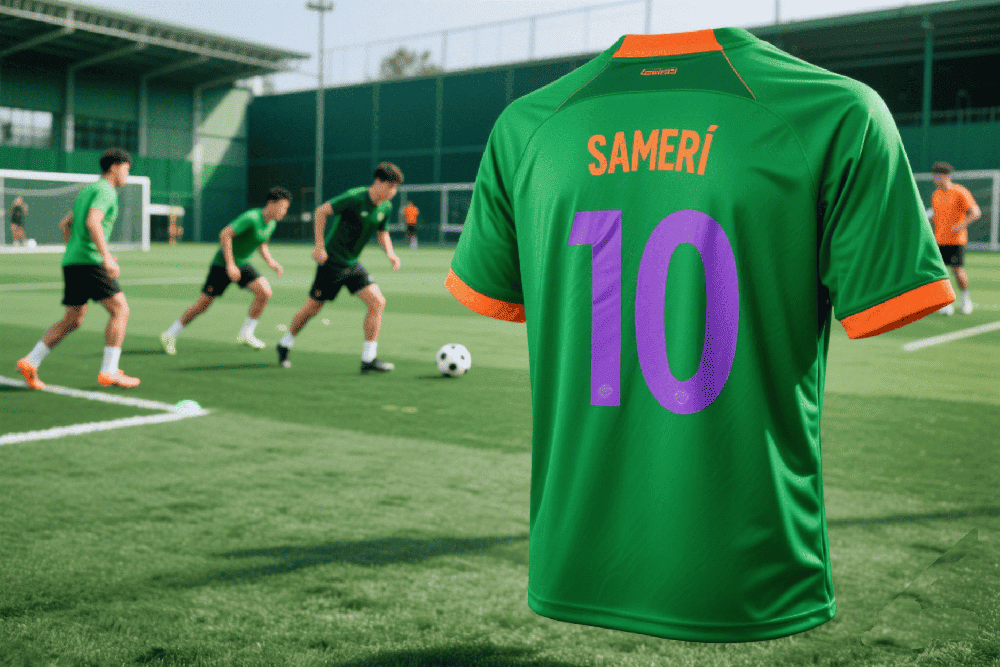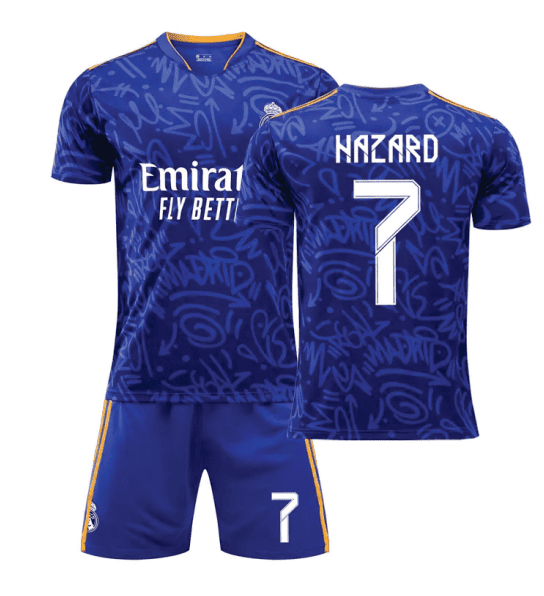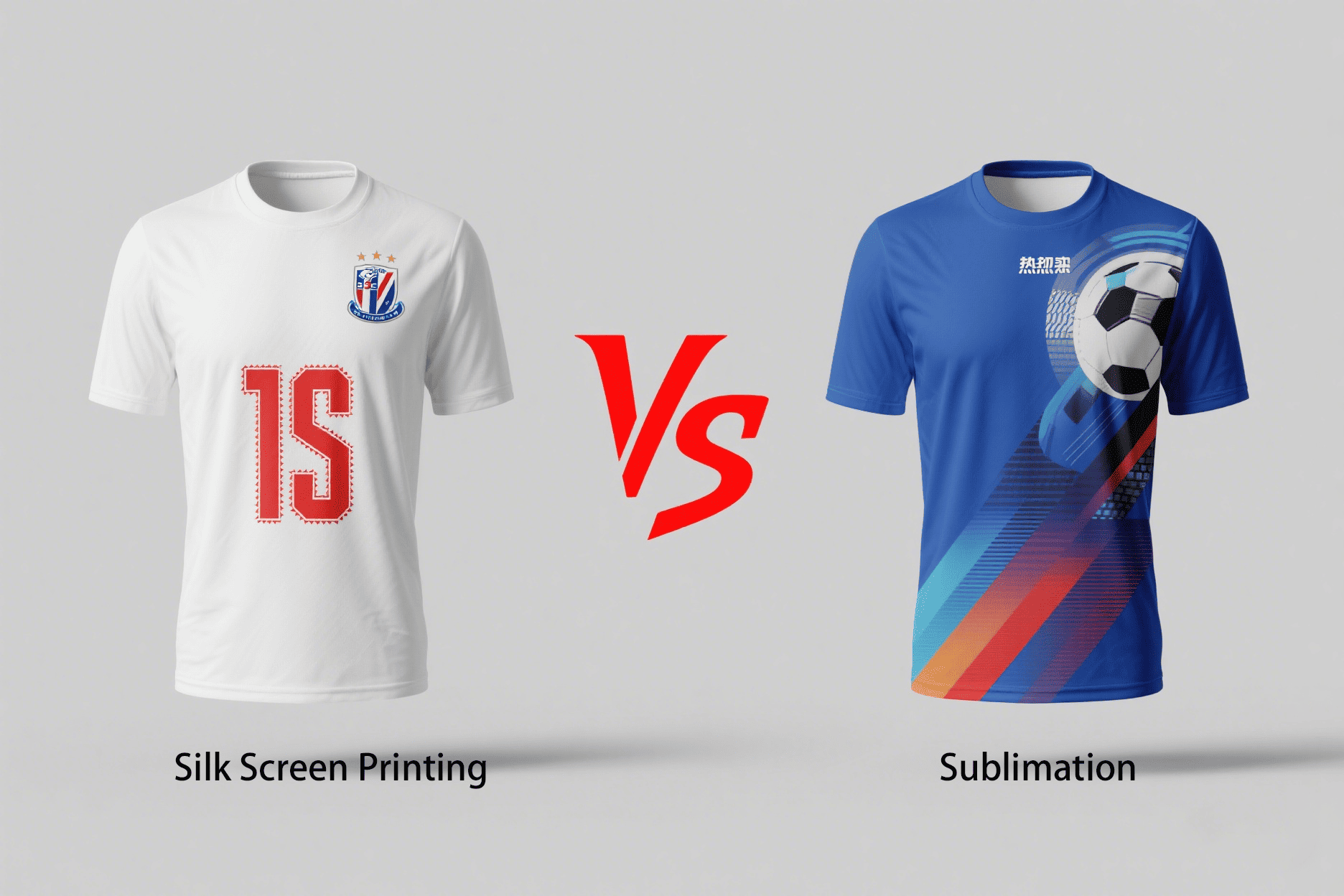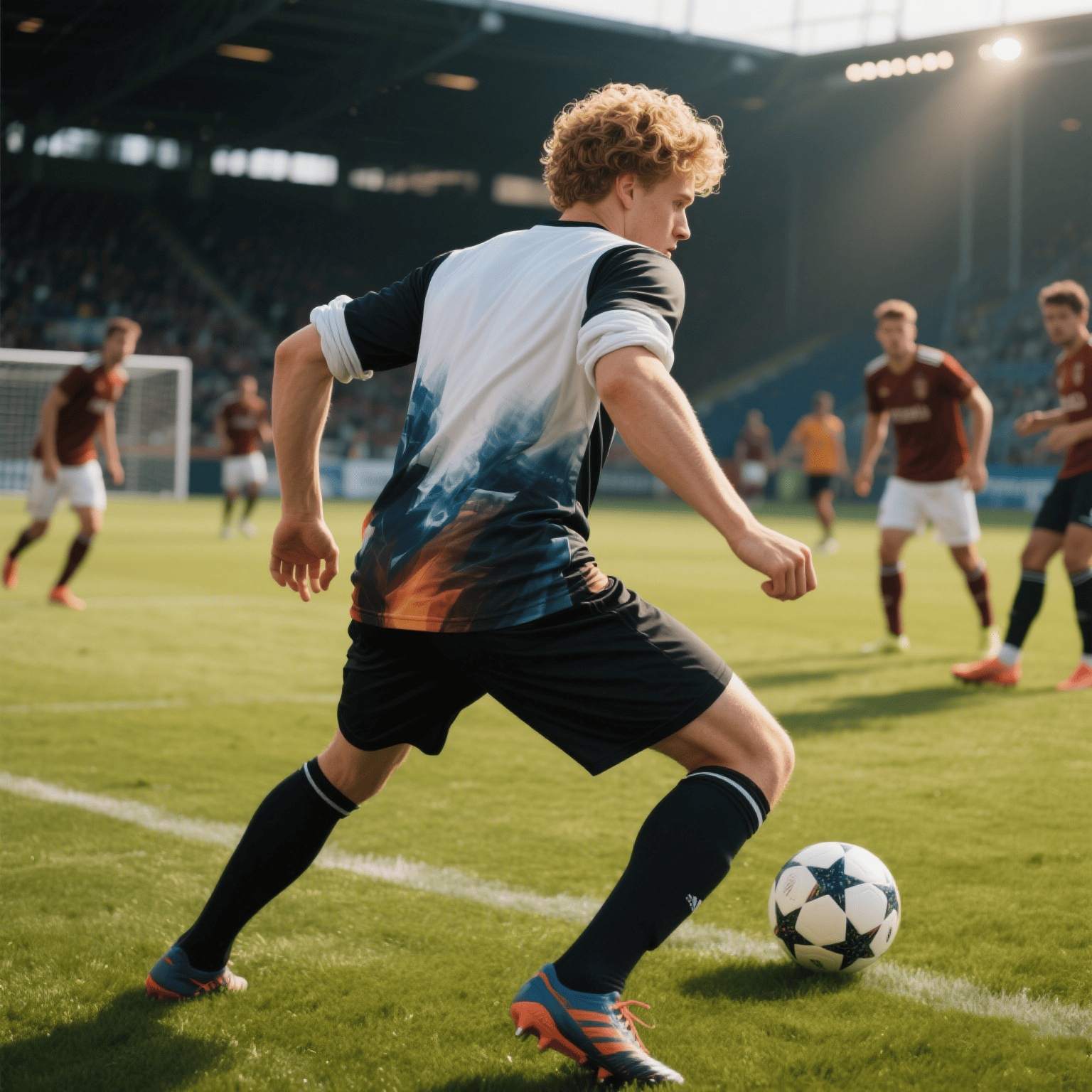SPORTSWEAR
Why Sublimation Printing is a Game-Changer for Custom Soccer Jerseys (And What Buyers Need to Know)?
- What is Sublimation Jersey Printing?
- How is a Sublimated Jersey Made?
- What is the Difference Between Sublimation Jersey and Regular Jersey?
- Are Sublimated Jerseys Better?
- Conclusion
Introduction
Have you ever wondered how those vibrant, all-over print soccer jerseys get their incredible designs? Or maybe you’re looking to order custom jerseys and want the best possible quality and appearance.
Sublimation printing is a technology that has completely transformed the world of custom sports apparel, especially for soccer jerseys. As someone who has been in the sports wear manufacturing business for years, I’ve seen firsthand how this method stands out.
This article will explain what sublimation printing is, how it works, and why it’s often the top choice for custom soccer jerseys. I’ll share my insights from years of producing these garments for buyers like you.
1. What is Sublimation Jersey Printing?
Sublimation printing is a pretty neat process. It’s not like screen printing where ink sits on top of the fabric. Instead, sublimation uses special heat-sensitive inks.
These inks turn into a gas when heated. Then, they bond directly with the fibers of polyester or polymer-coated fabrics. Think of it like a tattoo for the fabric, rather than a sticker.
1.1 The Science Bit: How it Works
The magic of sublimation lies in the chemical process.
- Special Dye: We start with designs printed on special transfer paper using sublimation dyes.
- Heat and Pressure: The transfer paper is placed on the fabric (usually white or light-colored polyester). Then, heat and pressure are applied using a heat press machine.
- Gas Transition: The heat causes the dyes to transform from a solid to a gas state, without ever becoming a liquid. This is the “sublimation” part.
- Fabric Infusion: The gaseous dye penetrates the open pores of the polyester fabric.
- Cooling and Bonding: As the fabric cools, the dye turns back into a solid and becomes permanently embedded within the fibers. The pores of the fabric close, trapping the color.
The result is a print that is incredibly durable, doesn’t crack, peel, or fade easily. The design becomes part of the fabric itself. This is why, as a manufacturer, I often recommend it for performance sportswear. The print doesn’t add any weight or change the feel of the fabric, which is crucial for athletes. It also allows for full-color, complex designs to spread across the entire garment seamlessly. For buyers looking for intricate logos or all-over patterns, this is a huge plus.
2. How is a Sublimated Jersey Made?
Struggling to get complex, vibrant designs on your team jerseys without them fading or cracking? It’s a common issue with traditional printing methods.
A sublimated jersey is made by printing a design with special inks onto transfer paper, then using heat and pressure to transfer the ink as a gas directly into the polyester fabric fibers, making the design permanent and vibrant.
This method ensures the design won’t peel, crack, or fade.
Want to understand the journey of a jersey from a design file to a wearable piece of art? The process of creating a sublimated jersey is quite fascinating and involves several key steps. It’s a bit more involved than just printing something on paper, but the results are worth it. Let’s walk through how we bring these vibrant jerseys to life in my factory.
Here are the key steps involved in making a sublimated jersey:
2.1 Design Creation
Everything starts with the design. This can be anything from simple team logos and numbers to complex, full-color graphics that cover the entire jersey.
- Digital Artwork: The design is created using graphic design software like Adobe Illustrator or CorelDRAW. It’s important that the artwork is in a high-resolution vector format to ensure sharpness when scaled to full jersey size.
- Color Matching: We pay close attention to color codes (like Pantone) if the client has specific brand colors. This ensures the final product matches their expectations.
2.2 Printing onto Transfer Paper
Once the design is finalized, it’s printed onto special sublimation transfer paper.
- Sublimation Inks: We use high-quality sublimation inks in our wide-format inkjet printers. These inks are unique because they can turn from a solid to a gas when heated.
- Mirror Image: The design is printed as a mirror image on the transfer paper. This is so it appears correctly when transferred to the fabric.
- Paper Panels: For jerseys, the design is usually printed in panels – front, back, sleeves. This is because we sublimate the fabric before it’s sewn together.
2.3 The Heat Transfer Process
This is where the sublimation magic happens.
- Fabric Preparation: We use 100% polyester fabric, or a high-polyester blend, usually white or very light-colored, as sublimation dyes work best with these materials. The fabric panels are cut roughly to shape.
- Positioning: The printed transfer paper is carefully positioned on the fabric panels. We have to be precise to ensure the design lines up correctly.
- Heat Press: The fabric and paper are then placed into a large heat press. These machines apply consistent heat (typically around 180-210°C or 350-410°F) and pressure for a specific amount of time (usually 30-60 seconds).
- Ink Infusion: Under the heat and pressure, the sublimation ink on the paper turns into a gas and permeates the polyester fibers. The ink bonds with the fabric at a molecular level.
2.4 Cooling and Paper Removal
After the heat press cycle, the fabric panels are removed.
- Cool Down: The fabric needs a moment to cool.
- Peel Away: The transfer paper is then peeled off. The design is now permanently infused into the fabric. The paper will look faded, as the ink has moved to the jersey material.
2.5 Sewing and Finishing
The final step is to construct the jersey.
- Cutting: The sublimated fabric panels are now precisely cut according to the pattern pieces for the specific jersey size and style.
- Sewing: Our skilled seamstresses then sew the panels together – front, back, sleeves, collar – to create the finished jersey.
- Quality Check: Each jersey goes through a quality control check to ensure the print is perfect and the stitching is strong.
As a manufacturer, understanding these steps helps us maintain quality and efficiency. For you, the buyer, knowing this process can help you appreciate the craftsmanship and also understand why lead times might be what they are for fully custom orders. The equipment needed includes:
- High-quality graphic design software.
- Wide-format inkjet printers specifically designed for sublimation.
- Special sublimation inks and transfer paper.
- Large-format heat press machines.
- Fabric cutting tools (manual or automated).
- Industrial sewing machines.
It’s a combination of technology and skill that produces those amazing, durable, and vibrant custom soccer jerseys.
3. What is the Difference Between Sublimation Jersey and Regular Jersey?
Are you tired of jerseys where the print feels heavy, cracks over time, or limits your design ideas? These are common frustrations with older printing techniques.
Sublimated jerseys differ from “regular” (often screen-printed or heat-transfer vinyl) jerseys primarily in how the design is applied. Sublimation infuses ink into the fabric, making it part of the material. This results in a lightweight, breathable, and durable design that won’t crack, peel, or fade. Regular jerseys often have designs sitting on top of the fabric, which can affect feel and longevity.
When you’re looking for custom jerseys, custom jerseys you’ll encounter different types. Understanding the key differences helps you make an informed choice that best suits your needs, especially for performance and appearance. Let’s dive a bit deeper into how sublimation stands apart. It’s not just about looks; it’s about performance, longevity, and even design freedom.
Here’s a breakdown of the key distinctions:
3.1 The Application Method
- Sublimation: As we’ve discussed, the ink becomes part of the fabric. It’s a dye process, not an overlay.
- Regular (Screen Printing): Ink is pushed through a mesh screen onto the fabric, creating a layer of ink on the surface. Each color typically requires a separate screen, which means more setup.
- Regular (Heat Transfer Vinyl – HTV): Designs are cut from colored vinyl and then heat-pressed onto the garment. This creates a distinct layer on top of the fabric.
3.2 Feel and Breathability
This is a big one for athletes.
- Sublimation: Since the ink is in the fabric, there’s no added layer. The jersey retains its original feel and breathability. This is crucial for comfort during a game.
- Regular (Screen Printing): Depending on the ink and design size, the printed area can feel thicker and less breathable. Large, solid screen prints can sometimes feel like a plastic sheet.
- Regular (HTV): Vinyl creates a noticeable layer that can be stiff and non-breathable, especially for larger designs.
3.3 Durability and Longevity
How long will your design last?
- Sublimation: The design is permanent. It won’t crack, peel, or fade over time, even with many washes. The colors stay vibrant. As long as the fabric itself holds up, the design will too.
- Regular (Screen Printing): Good quality screen prints can be durable, but they can crack or fade eventually, especially with harsh washing or heavy wear.
- Regular (HTV): Vinyl can peel, crack, or lift at the edges over time, particularly if not applied correctly or if washed improperly.
3.4 Design Complexity and Color
This is where sublimation truly shines for custom designs.
- Sublimation: Allows for unlimited colors, gradients, intricate details, and full all-over prints seamlessly. Photographic images can be reproduced with great clarity. There’s no extra cost for more colors, which is a huge benefit I always point out to my clients. It also means no setup fees for different colors or designs, unlike screen printing. This is a big advantage because it saves on plate fees, making smaller, highly customized orders more economical. For designers and creative teams, this offers unparalleled freedom to bring their visions to life without compromise.
- Regular (Screen Printing): Each color requires a separate screen and setup, which adds to the cost and complexity. Gradients and photographic details are harder and more expensive to achieve.
- Regular (HTV): Typically limited to solid colors. Layering multiple colors is possible but adds bulk and labor. Intricate designs can be difficult to weed (remove excess vinyl).
3.5 Fabric Type
- Sublimation: Works best on 100% polyester or high-polyester content fabrics, usually white or light-colored.
- Regular (Screen Printing/HTV): Can be used on a wider variety of fabrics, including cotton, blends, and dark colors (though screen printing on darks often requires an underbase, adding another layer).
Here’s a quick comparison table:
| Feature | Sublimation Jersey | Regular Jersey (Screen Print) | Regular Jersey (HTV) |
|---|---|---|---|
| Design Application | Ink infused into fabric fibers | Ink layer on fabric surface | Vinyl layer on fabric surface |
| Feel | No change to fabric feel, lightweight | Can feel thicker, less breathable | Can feel stiff, non-breathable |
| Durability | Excellent; no cracking, peeling, fading | Good; can crack/fade over time | Fair; can peel/crack over time |
| Color/Complexity | Unlimited colors, gradients, complex | Limited colors (cost per color) | Limited to solid colors |
| Breathability | Excellent | Reduced in printed areas | Significantly reduced |
| Fabric | Polyester / Poly-blend (light colors) | Cotton, blends, various colors | Cotton, blends, various colors |
| Setup Costs | Low (no per-color fees) | Higher (per color/screen) | Moderate |
For soccer teams that need high-performance gear with vibrant, lasting designs, sublimation is usually the superior choice. The initial investment might seem similar for very simple one-color designs, but for anything complex or multi-colored, sublimation often becomes more cost-effective and delivers a better product.
4. Are Sublimated Jerseys Better?
Wondering if upgrading to sublimated jerseys is worth it for your team’s performance and look? It’s a key question when budgeting for new kits.
Yes, for most custom sports apparel needs, especially soccer jerseys, sublimated jerseys are generally considered better due to their superior durability, comfort, breathability, and design capabilities. The ink becomes part of the fabric, ensuring designs don’t crack, peel, or add weight, and allowing for unlimited colors and intricate details.
So, we’ve looked at what sublimation is and how it compares to other methods. But the big question remains: are sublimated jerseys actually better? From my experience as a manufacturer working with countless teams and brands, the answer for most soccer applications is a resounding yes. Let’s explore why this technology is so highly regarded.
Here’s a more detailed look at why sublimated jerseys often come out on top:
4.1 Unmatched Durability
This is a massive advantage for sports apparel.
- No Cracking or Peeling: Because the dye is infused into the fabric, there’s no layer on top to crack, peel, or wear off. The design will last as long as the garment itself. I’ve seen jerseys go through years of intense use and countless washes, and the sublimated designs still look sharp.
- Fade Resistance: Sublimation dyes are very stable and resist fading from UV light and washing much better than many traditional inks.
4.2 Superior Comfort and Performance
For athletes, comfort is key.
- Lightweight: No added ink layers mean the jersey remains as lightweight as the original fabric.
- Breathability Maintained: The sublimation process doesn’t clog the fabric pores, so the material’s natural moisture-wicking and breathable properties are preserved. This is critical for player comfort and performance on the field. Players often tell me they can’t even feel the print.
4.3 Unlimited Design Freedom
This is where sublimation truly outshines other methods, especially for custom orders.
- Full-Color Spectrum: You can use an unlimited number of colors, gradients, and intricate patterns without any additional cost per color. This is a game-changer compared to screen printing, where each color adds to the expense.
- All-Over Prints: Designs can go seam-to-seam, covering the entire jersey, including sleeves and collars, for a truly custom and professional look. This freedom allows for unique team identities.
- Photographic Quality: Complex images and photographic details can be reproduced with stunning clarity.
4.4 Professional Appearance
Sublimated jerseys just look more professional.
- Sharp and Vibrant: The colors are incredibly bright and the details are crisp.
- Integrated Look: The design looks like it’s an integral part of the garment, not an add-on.
4.5 Cost-Effectiveness for Customization
While the per-unit cost might be slightly higher than basic screen printing for very simple, large-volume orders, sublimation is often more cost-effective for:
- Small to Medium Runs: No screen setup fees mean smaller, custom orders are more affordable.
- Multi-Color/Complex Designs: The price doesn’t escalate with the number of colors or design complexity. As I mentioned before, this means no plate fees, which is a significant saving for buyers wanting unique designs.
While sublimation works best on polyester and light-colored fabrics, these are typically the preferred materials for performance soccer jerseys anyway due to their moisture-wicking properties. So, for most soccer jersey needs, the advantages far outweigh any limitations. If you want your team to look great, feel comfortable, and have jerseys that last, sublimation is almost always the better choice.
Conclusion
Sublimation printing truly is a game-changer for custom soccer jerseys. It offers unparalleled design freedom, vibrant and permanent colors, and a print that doesn’t compromise the fabric’s feel or performance.
From my perspective as a manufacturer, the key benefits for buyers are:
- Durability: Designs that won’t crack, peel, or fade.
- Comfort: Lightweight and breathable, as the ink is part of the fabric.
- Design Flexibility: Unlimited colors and complex, all-over prints without extra setup costs like plate fees.
- Professional Look: Sharp, vibrant graphics that make any team stand out.
If you’re looking for top-quality custom soccer jerseys that can handle the rigors of the game while showcasing your unique design, sublimation printing is the way to go. It’s an investment in quality, appearance, and player comfort. As a buyer, understanding this process empowers you to ask the right questions and choose the best option for your needs.
Ready to explore custom sublimated jerseys for your team or business? Feel free to reach out to us at ledouapparel@gmail.com or visit www.siholasports.com to see how we can bring your designs to life!






